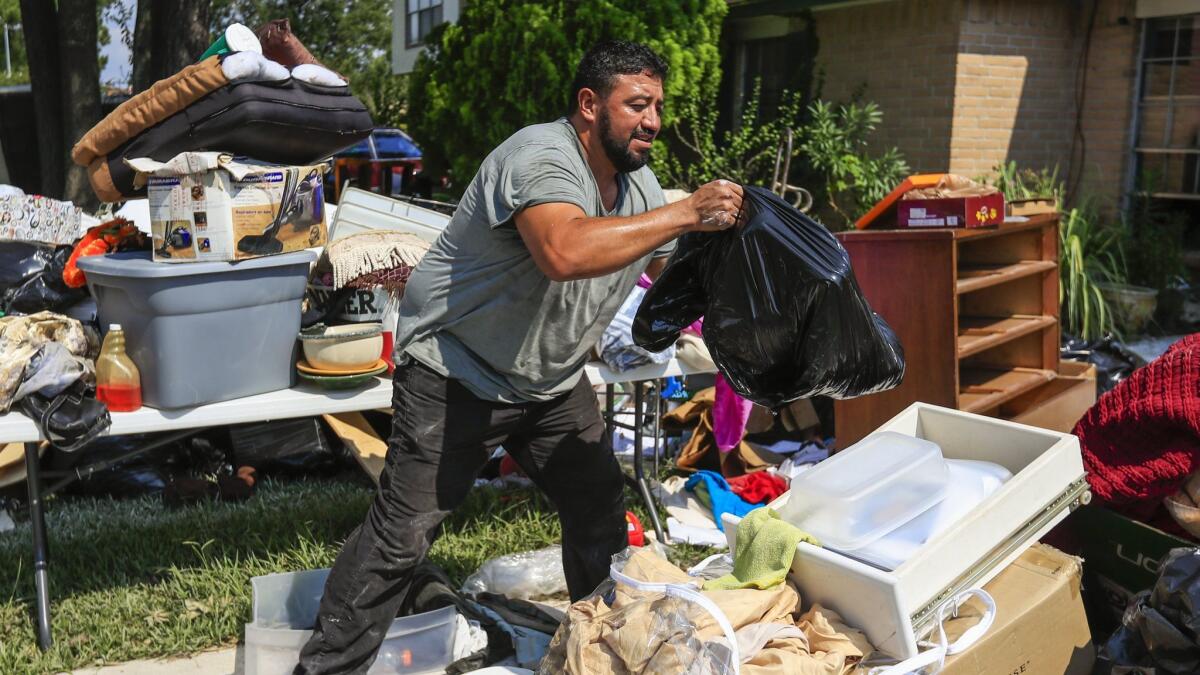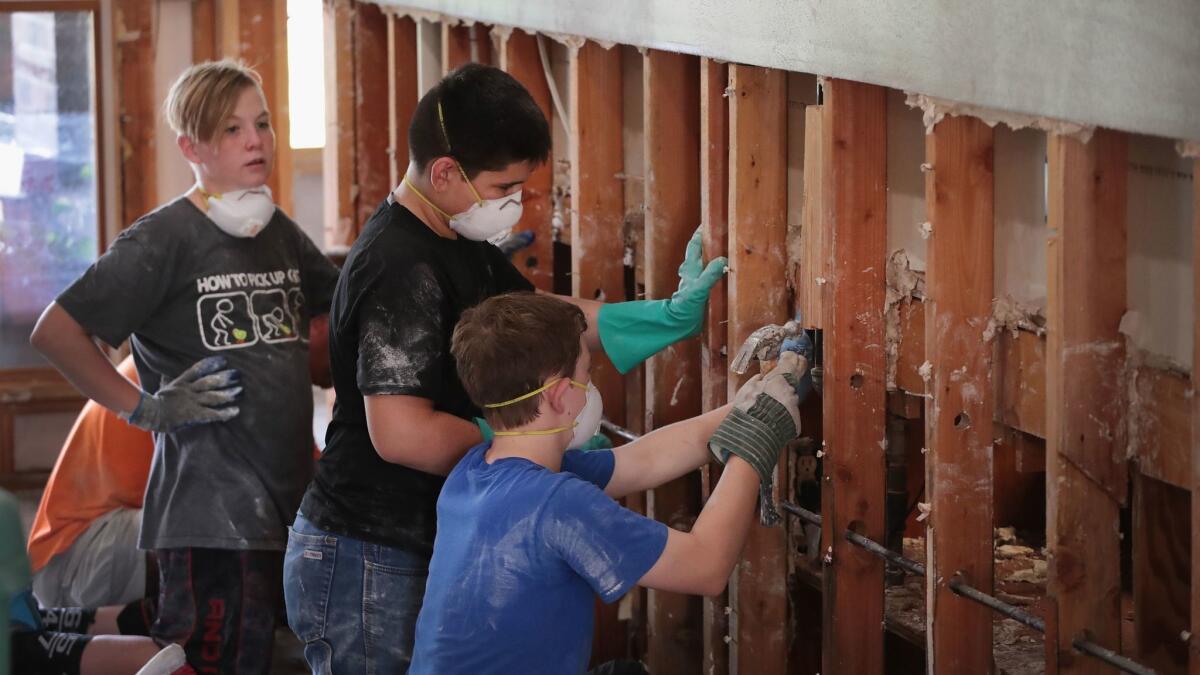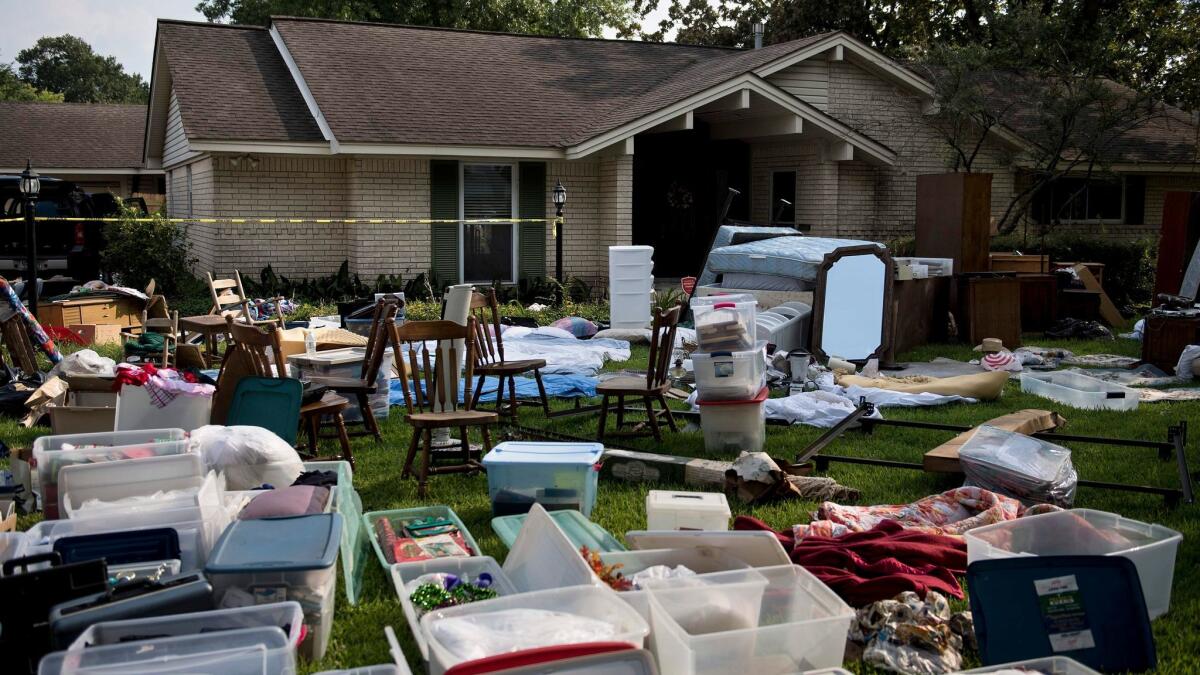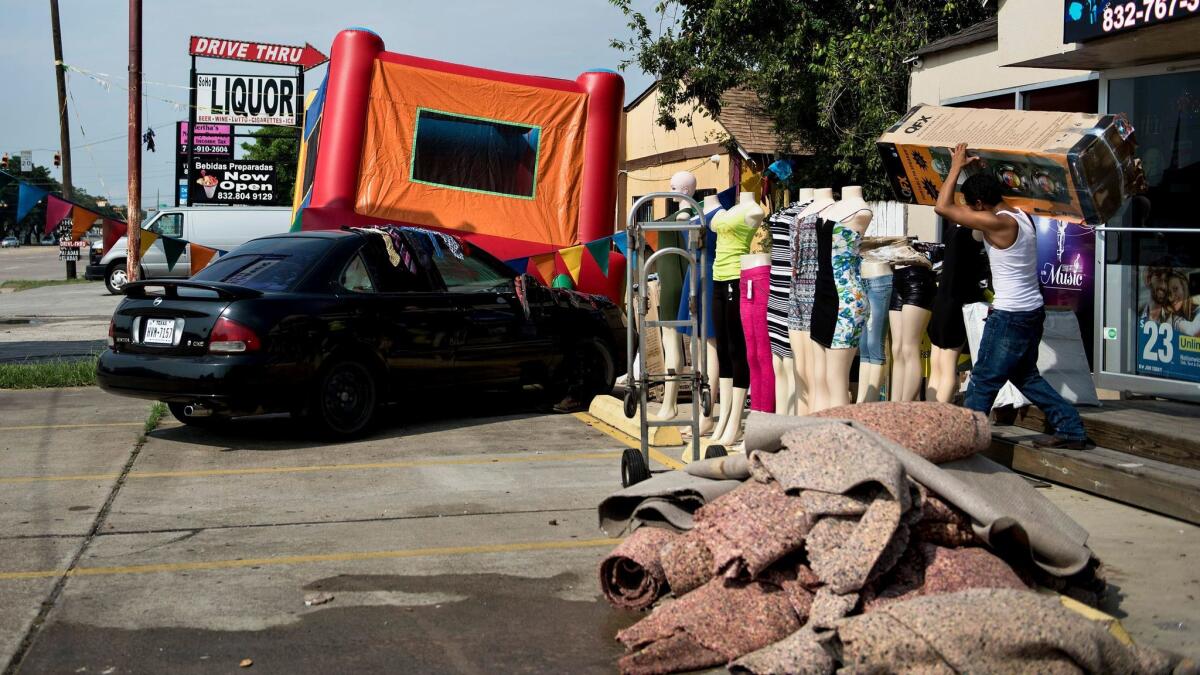After the search and rescue ends, what comes next for Harvey victims?

- Share via
For the tens of thousands of people displaced by surging floodwaters in Texas, the path to recovery will test them physically, mentally and financially. They will need to be resilient and inventive, disaster experts say, and must resign themselves to having to make innumerable decisions.
“Unfortunately, there’s a very long road ahead for the people who have been impacted by this disaster,” said Tricia Wachtendorf, a professor of sociology at the University of Delaware and director of the school’s Disaster Research Center. While the response and rescue stage is traumatic, “the recovery phase can be equally stressful,” she said.
The big cleanup
In the coming weeks, those displaced will be moving out of emergency shelters and into more long-term, if temporary, housing.
“That will be a difficult transition for them as they wait to have more temporary housing made available to them,” Wachtendorf said. “The stress of being evacuated from their homes — sometimes in very dangerous conditions — the experience of being in a shelter environment or very stressful emergency sheltering conditions is bad enough. But then it’s compounded as they move through this recovery phase that will be very new to them.”
The initial return to their homes or apartments will be daunting, greeted with broken furniture, saturated rugs, stinking refrigerators and mounds of mold.
Though eager to get started on repairs or rebuilding, they should wait for authorities to give the green light that it’s safe to return, said Steve Cain, a disaster specialist at Purdue Extension in Indiana that provides scientific, research-based information and education.
“Gas lines may be busted in the neighborhood and could cause explosions, and electrical lines could cause someone to get electrocuted,” said Cain, who helps lead long-term recovery of disasters in Indiana.
Cain said those returning to flooded dwellings would be wise to get a new tetanus shot or booster “because you’re going to be exposed to some pretty nasty stuff when you go into that home.”
Humid air and stagnant water are also ideal breeding conditions for mosquitoes.
Homeowners will first need to face the so-called “muck out,” Cain said. This involves getting rid of the water, mud, wet wallboard, and soaked insulation and furniture.

Ensuring that rebuilding does not begin until the home has sufficiently dried out is critical. “If there’s moisture trapped in the walls, that moisture will cause mold to grow,” Cain said. “Six months down the line, people start having respiratory issues and other health problems, and it’s all related to mold growth. A home with mold is not habitable.”
Homeowners must also endure the ordeal of finding a reliable and trustworthy contractor — a feat that could take several months.
“It will be very difficult,” Cain said. “Every disaster, we see disreputable contractors, who are storm chasers, who come in from everywhere.”
The Federal Emergency Management Agency warned on its website that construction could “only begin after you get the required local permits … to ensure your construction complies with local building codes and flood damage prevention ordinances.”
Lack of housing could trigger a demographic shift
A return to normality, experts say, depends heavily on finding housing — and how quickly that can be achieved.
“How fast that happens, and where the funding comes from, is really key to figuring out who will be able to stay in their home or who will just be forced out,” said Elizabeth Fussell, a sociologist and demographer at Brown University.
The experience will differ for homeowners and renters. Many homeowners could find themselves caught in wrangling between homeowners insurance companies and flood insurance companies as agents assess whether certain types of damage was caused by high winds and rain or by flooding, Fussell said. The cause determines which entity is ultimately responsible for the payout.
Renters will be at a disadvantage because they have no claim on their residence if it suffered substantial damage, Fussell said. Leases are typically terminated in cases where repair is needed to make a unit habitable.

“Landlords will have to basically kick out their tenants, and those tenants will be searching for homes, not just in whatever community they came from, but in areas that were not affected by the hurricane” Fussell said. “They’re going to be sent out in search for new rental housing that will be in short supply locally.”
And that’s when “rental inflation” will kick in for the area’s remaining habitable properties.
“Landlords are sure to jack up the rental costs,” Fussell said. “And anybody who is looking for affordable rental housing is going to be priced out of the market. “
People who were living in low-income or subsidized housing will be the most affected, experts said.
“They will have the most difficult time coming back to whatever community they were living in,” Fussell said. “And that’s where we see the demographic impact, because the people who are in those lower-cost rental housing units are typically going to be people who have lower income and less education. And they are typically going to be racial and ethnic minorities.”
No work, no corner store
Thousands of people are likely to find themselves out of work as companies try to get back on their feet.

Small businesses such as corner grocery stores, delis and restaurants could struggle to rebound, said Lloyd Dixon, an economist and director the Center for Catastrophic Risk Management and Compensation at the Rand Corp.
“A lot of the time, in order to get a small business loan or something to restructure, the small business owners will have to put their whole house up as collateral, and there’s also the whole issue of access to credit and the burden that puts on small businesses in particular,” Dixon said. “They are in a difficult situation.”
But flood-wary residents could watch their state become a lure for newcomers.
“One of things to think about in economic recovery is that you can see a drop in retail products because businesses are closed and plants aren’t working,” Dixon said. “But subsequent to that, you could well see an upsurge, because of all the rebuilding and the investment that comes in to repair and replace the different infrastructure.”
Said Fussell: “We often see that disasters actually attract population because they create new opportunities … with every disaster you can think of it as an economic boom.”
For more on global development news, see our Global Development Watch page, and follow me @AMSimmons1 on Twitter
ALSO
After Harvey, Texas rallies to rescue cats and dogs, with lessons learned from Hurricane Katrina
President Trump arrives in Houston to meet with survivors of Harvey’s floods
Texas residents face new evacuations and overflowing rivers caused by Harvey
More to Read
Sign up for Essential California
The most important California stories and recommendations in your inbox every morning.
You may occasionally receive promotional content from the Los Angeles Times.











